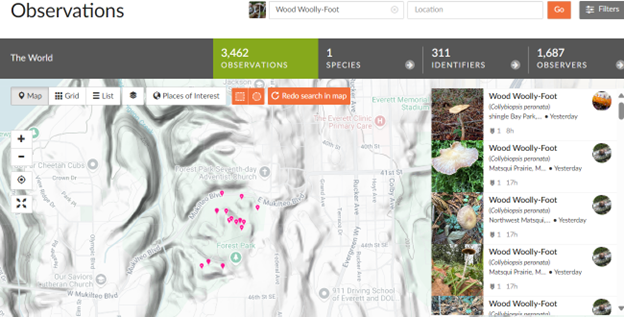My interest in mushrooms has nothing to do with foraging and is strictly related to the fascinating world of mycorrhizal fungi and their symbiotic relationships with native plants. When scores of small, plain mushrooms started to appear in Everett’s Forest Park, I was hoping they were part of that network.
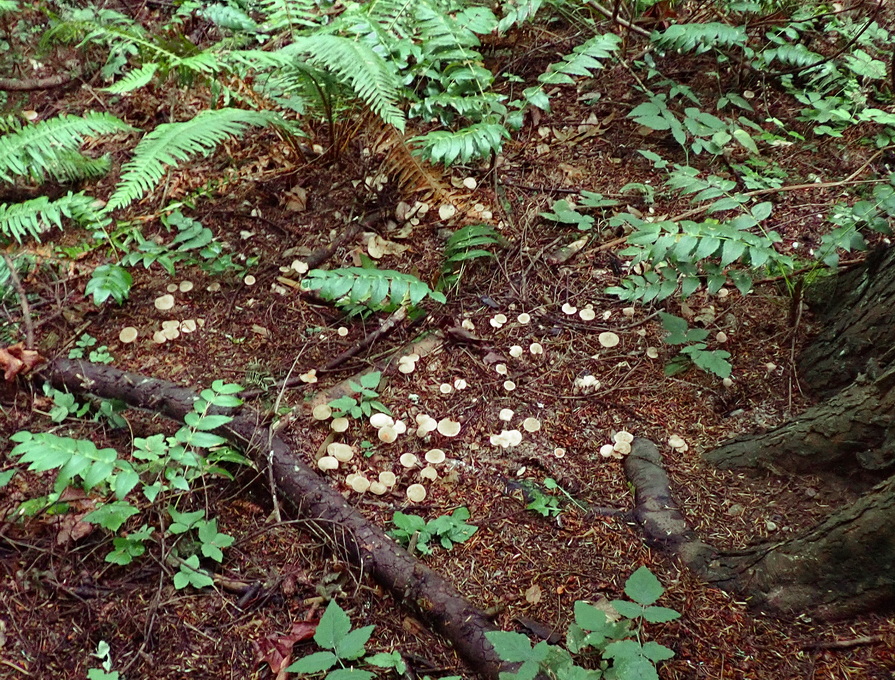

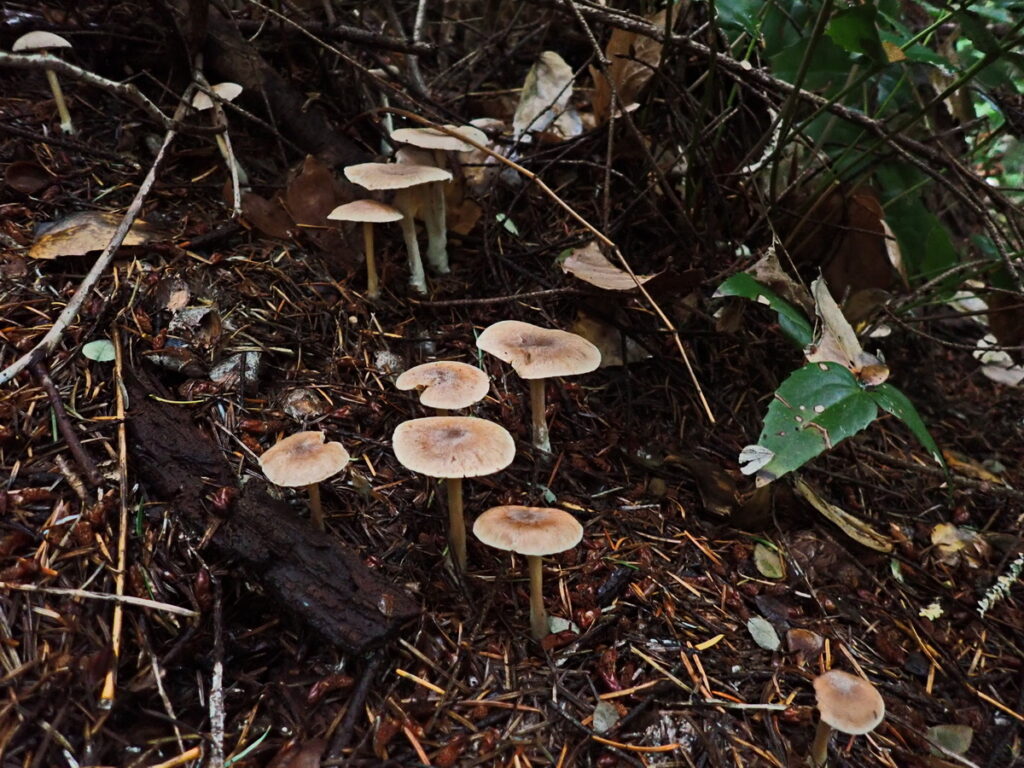
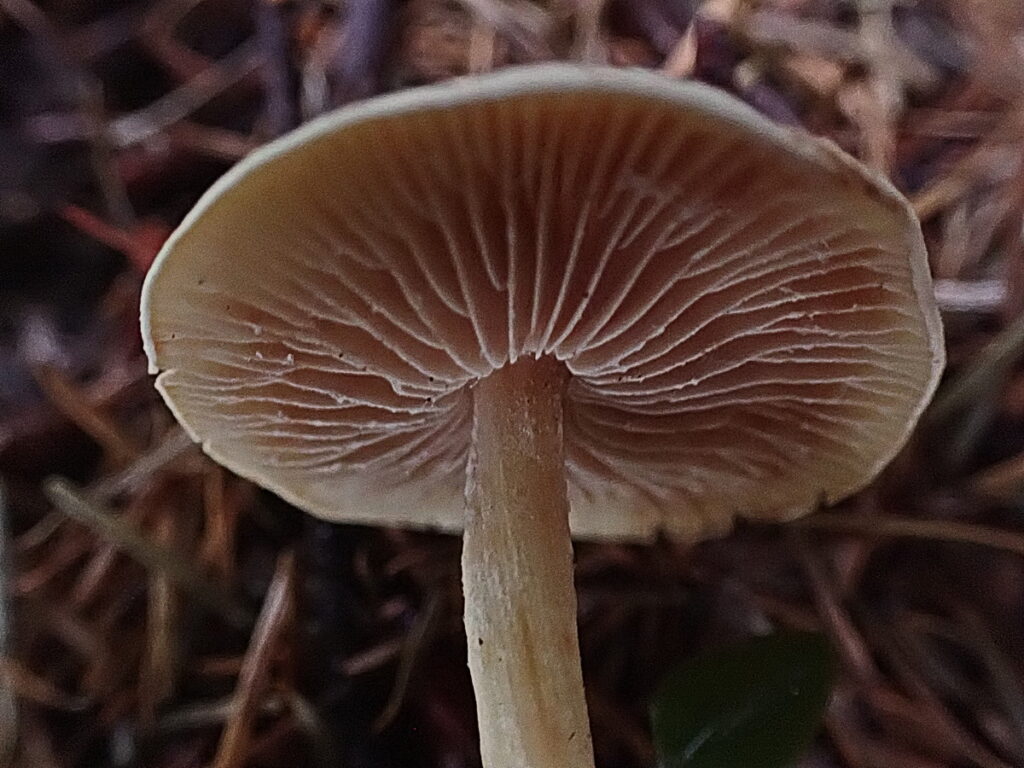

In Search of an Identification
I had no luck identifying the mushrooms based on various websites, so I showed a specimen to Rand Workman, the identification expert at this year’s Snohomish County Mycological Society mushroom show. He told me it was an invasive European mushroom in the Collybiopsis genus. Later, I posted pictures and a description on Facebook’s Pacific Northwest Mushroom Identification Forum, and Leah Bendlin, one of the group’s administrators and group experts said the mushrooms “looked good” for Collybiopsis peronata.
Having an identification, I searched the web to learn about the mushroom, why it was invasive, and what could be done about it.
Collybiopsis peronata – The Wood Wooly-Foot
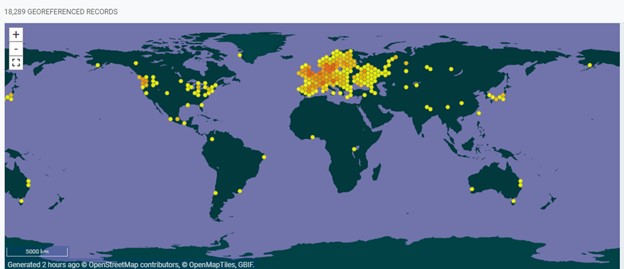
C. peronata is a decomposer, absorbing its nutrients from decaying organic matter. Fortunately, it is not pathogenic like Phellinus weirii, responsible for laminated root rot in conifers. Nor, is it extremely dangerous, like the invasive Death-cap (Amanita phalloides). However, the mycelial network of C. peronata binds together forest duff into large, dense mats “to the exclusion of other litter decomposers.” Its negative effect is probably similar to the invasive Golden Oyster mushroom which in some areas is “outcompeting native mushroom species and leading to habitat loss.”
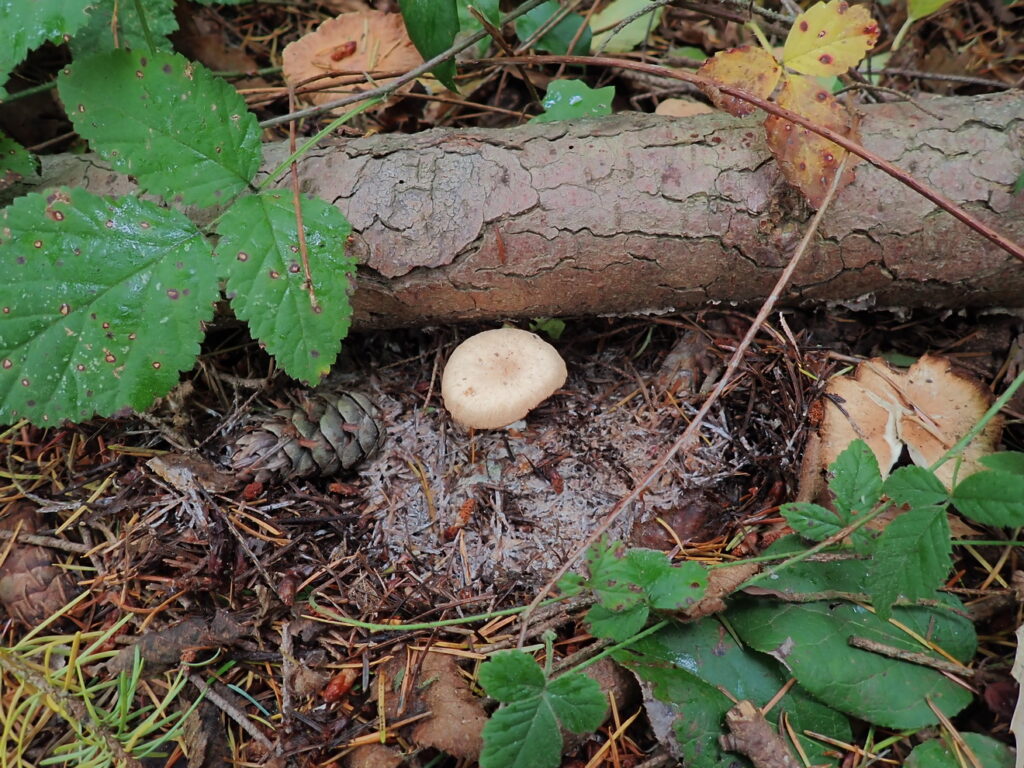
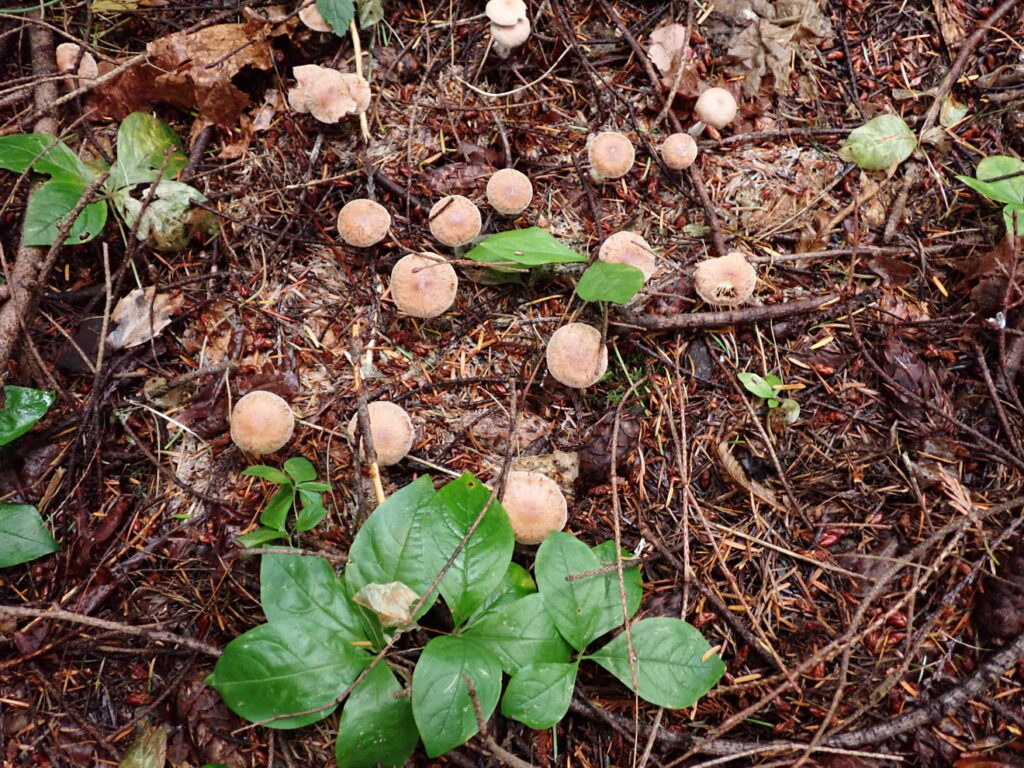
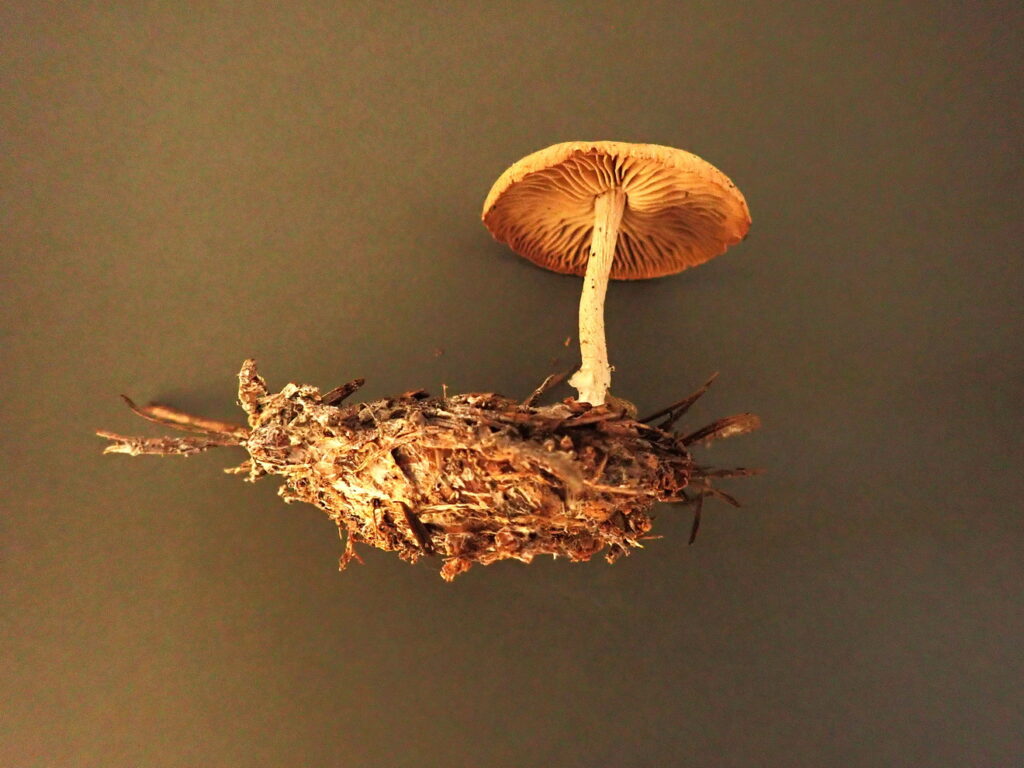
Controlling Collybiopsis peronata – Early Detection and Rapid Response
Like any invasive species, early detection and rapid response are essential. I think it might be possible to limit the spread of C. peronata in your backyard forest if you:
- identify a small outbreak when it first appears, and
- immediately remove and trash the entire group of mushrooms along with the entire mycelial network around it.
Unfortunately, it’s much too late for that in Everett’s Forest Park.
